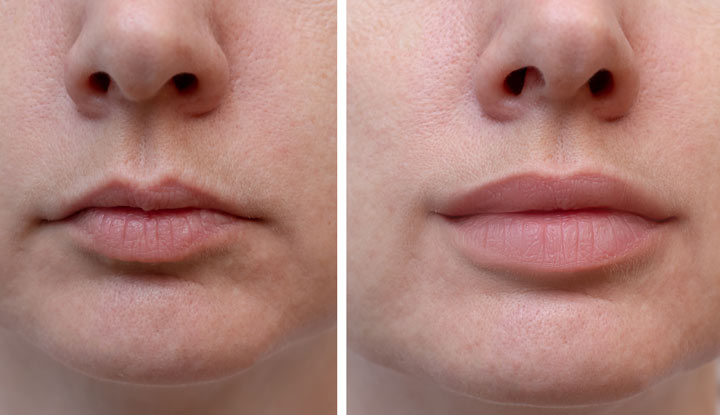
The question of safety always starts with technique and materials.
Lip fillers are considered low-risk when applied by trained professionals.
But problems arise when shortcuts are taken.
Unqualified providers often use cheap or unapproved products.
These are the situations where most complications are reported.
Technique and product quality matter more than people assume.
Lip Fillers Are Considered Low-Risk When Applied by Trained Professionals
Board-certified injectors know where to place filler and how deep to go.
They study facial anatomy, not just injection angles.
Nerves, blood vessels, and tissue layers aren’t guesswork.
Avoiding danger zones means avoiding long-term damage.
Your results depend less on brand and more on skill.
A good injector prevents problems before they begin.
Avoiding Danger Zones Means Avoiding Long-Term Damage
Not all areas of the lips are equally safe to inject.
Some are close to major blood vessels.
Inexperienced injectors may block blood flow accidentally.
That can cause tissue damage or, in rare cases, necrosis.
These events are uncommon but not impossible.
That’s why training and precision make such a difference.
These Events Are Uncommon but Not Impossible
Lip fillers aren’t dangerous by default.
But they become risky when technique is rushed or ignored.
People think complications come from the filler itself.
But most issues are related to how it’s injected.
The wrong depth, wrong amount, wrong angle — these lead to problems.
And they’re avoidable with the right expertise.
Most Issues Are Related to How It’s Injected
Common side effects are not complications.
Swelling, bruising, and tenderness are completely expected.
They usually resolve in a few days.
Applying ice helps, as does sleeping upright.
If symptoms worsen instead of improving, call your provider.
Delayed pain or spreading color may need medical review.
Swelling, Bruising, and Tenderness Are Completely Expected
Don’t be alarmed if your lips feel uneven at first.
That’s often due to swelling, not poor placement.
Give it at least a week before judging results.
Fillers take time to settle properly.
What looks uneven on day two might look perfect by day ten.
Patience is part of safe recovery.
Fillers Take Time to Settle Properly
One big mistake is self-correction.
Some people try to massage or press the filler themselves.
That often worsens the situation.
If something looks off, talk to your injector first.
They’ll guide you based on what’s happening underneath.
Guessing leads to pressure points and migration.
Guessing Leads to Pressure Points and Migration
Another safety factor is the type of filler used.
Most lip fillers are made of hyaluronic acid.
This material is soft, reversible, and naturally found in the body.
It’s considered one of the safest options.
Brands may differ in thickness or texture, but the base is the same.
Choosing FDA-approved products makes a real difference.
This Material Is Soft, Reversible, and Naturally Found in the Body
If needed, hyaluronic acid fillers can be dissolved.
A product called hyaluronidase breaks them down safely.
That reversibility adds a layer of safety most procedures lack.
You’re not stuck with the result forever.
But dissolving should be done by experts too.
It’s not something to attempt on your own.
That Reversibility Adds a Layer of Safety Most Procedures Lack
Some countries don’t regulate injectables tightly.
People travel for cheaper procedures abroad.
That often means lower-quality products or poorly trained injectors.
What seems affordable can become expensive later.
Infections, hard lumps, or scar tissue can follow.
And fixing those mistakes takes time and expertise.
What Seems Affordable Can Become Expensive Later
Always ask what product is being used.
Check the packaging, ask for the brand name.
Know what’s going into your body.
A reputable provider won’t hide that information.
If someone avoids your questions, find someone else.
Safety starts with transparency, not just results.
Safety Starts With Transparency, Not Just Results
Your body can reject filler in rare cases.
That doesn’t mean it’s dangerous — just a reaction.
Allergies are extremely rare with hyaluronic acid.
Still, watch for redness, hard swelling, or fever.
Trust your instincts and seek help when unsure.
Early care makes correction easier.
